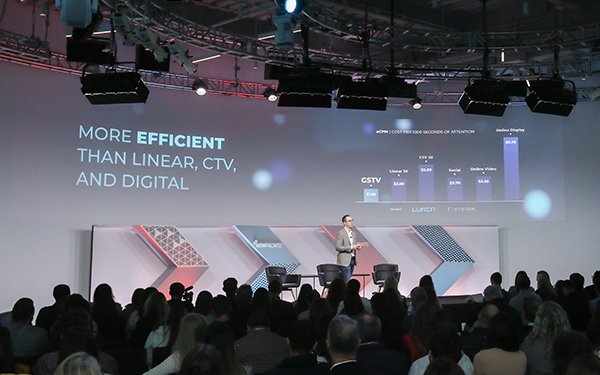Commentary
A Visual Attention Study That Went Terribly Right
- by Laurie Sullivan , Staff Writer @lauriesullivan, May 16, 2024

How does a company conduct a visual attention study to determine performance on video screens at retail locations when the participants who opted in only receive directions on when and where to show up? Other than that, participants had very little information about why they were there.
It takes a certain amount of trust to pull off this type of study. Eric Z. Sherman -- executive vice president of insights & analytics at national video network GSTV, who spent time at X when it was Twitter, as well as NBCUniversal -- did not want to influence the outcome that determined performance on the company's video screens at gas stations and convenience stores.
GSTV is owned by Rockbridge Growth Equity and Falcon Investment Advisors, so budgetary constraints were not likely to have been an issue in conducting this Lumen eye-tracking study on attention and recall.
advertisement
advertisement
Lumen proposed that GSTV recruit participants to a location just north of Atlanta, GA, in November, and fit them with Tobii eye-tracking glasses.
Tobii glasses monitored participants during the test based on what they saw, as well as what they heard.
“We told them to arrive with a quarter tank of gas in their car, so we can send them to a gas station to fill up their car,” Sherman said. “Come back after filling up the car to take a survey, we told them, but didn’t say the study was focused on adverting. We sent them to one of two locations that had a GSTV screen.”
Sherman said sometimes advertisers get proxy measures of digital attention, but Lumen found a way to track eyes on attention in a real environment. The company didn’t ask anyone to consume media. It just asked them to put on a special pair of glasses, get gas in their car, and come back.
The study found that 95% of the time people paid attention to the advertising impressions served. Four advertisers participated: one QSR sandwich restaurant, one CPG carbonated soft drink beverage, and one CPG non-food beverage, and one grocery retailer.
GSTV also worked with Dentsu based on the holding company's attention economy initiative -- brand recall -- which is something it has done for about five years.
When participants came back to the staging area and took off their glasses, they were asked to participate in a brand recall study based on the four ads they viewed at the gas station mixed in with some ads from brands they did not view.
Overall, there was 56% ad recall for the brands they viewed, which was much better than Dentsu’s normal percentages.
Attention per 1,000 impressions (APM) to ads on GSTV exceeds Dentsu’s online display norms by 5.0x, online video by 2.4x, and social by 2.3x.
Despite shorter ad durations, ads on GSTV delivered more attentive viewing time than :30 spots on both CTV -- more than 91% -- and linear TV, more than 60%, compared with TVision norms.
GSTV did not measure search, but separate from this study, the company has a practice of measuring the incremental impact of viewer behavior.
“We do about 100 studies quantifying incremental business outcomes, such as brand lift, increase in foot traffic, digital lift and behavior like app downloads, as well as sales lift,” he said.
The studies are tied to whether or not people buy the products sold in the convenient stores. Analyzing credit-card data, the company knows that people are more likely to spend.
Working with Foursquare, which aggregates location-based data, it can measure foot traffic to a physical location.
GSTV has run studies that use an opt-in Foursquare panel. The consumers share their location, so they can identify exposure to an ad running on a GSTV platform, and then track the opt-in participant to the physical location of the advertiser.
Comscore measures GSTV’s network as reaching 115 million monthly unique visitors. The company’s video screens, which display about a 4.5-minute show, are in 20,000 fuel and convenience store retailers. Typically, the video shows are a mixture of content and advertising from brands such as Pepsi, General Motors, State Farm Insurance, and McDonalds.



